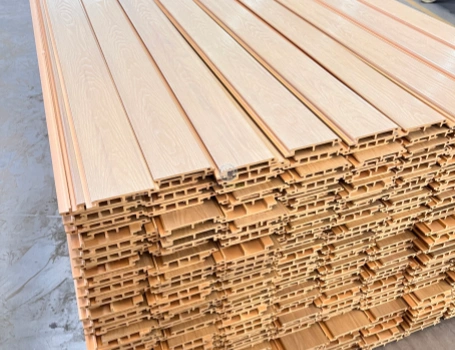How To Calculate The Density of A WPC Panelling?
In the world of construction and interior design, materials like Wood-Plastic Composite (WPC) are increasingly popular due to their durability and sustainability. Understanding the properties of these materials, such as density, is crucial for a dealer, distributor, or end user. In this blog, we'll explore how to calculate the density of a piece of WPC panelling, using a specific example to guide us through the process.
What is WPC?
WPC stands for Wood-Plastic Composite, a hybrid material composed of wood fibers and thermoplastics. Renowned for its resilience against outdoor elements and its low maintenance requirements, WPC is often used for decking, fencing, and panelling.

Calculating Density: A Step-by-Step Guide
First, you need to measure the weight of the WPC panelling. This can be done using a scale. Ensure the panelling is free of any additional materials like screws, nails, or adhesives that might alter the weight. The weight should be measured in kilograms (kg) or grams (g).
Next, you need to calculate the volume of the panelling. This can be done by measuring its length, width, and thickness. Use a measuring tape or ruler for this, ensuring accuracy. The length, width, and thickness should be measured in meters (m) or centimeters (cm).
To illustrate the process, let's consider a piece of WPC panelling with the following dimensions:
Weight: 2.17kg
Length: 2.9 meters
Width: 0.115 meters
Thickness: 0.016 meters
Measure the Volume
The volume is calculated by multiplying the length by the width and the thickness:
Volume=Length×Width×Thickness
The volume of the panel is calculated as follows:
Volume =2.9m×0.115m×0.016m=0.005336m3
Finally, calculate the density using the formula:
Density=Weight/Volume
Density=2.17kg/0.005336m3
If you measured the mass in kilograms and the volume in cubic meters (m³), the density will be in kilograms per cubic meter (kg/m³). If you used grams and cubic centimeters, the density will be in grams per cubic centimeter (g/cm³).
Final Calculation and Results
After performing the calculation, the density of the WPC panel comes out to be approximately 406.67 kg/m³. This value gives us an understanding of how dense and potentially durable the panel is, which is valuable for assessing its suitability for different applications.
Conclusion
Calculating the density of WPC panelling is a straightforward process that can provide valuable insights into its properties and potential uses. By understanding the density, we can make more informed decisions about material selection for specific projects.
Account for Variability: It's important to note that the density of WPC can vary depending on the specific composition of wood and plastic, as well as any additives. Therefore, this method gives you an approximate density for the specific piece of WPC panelling you are measuring.
Remember to convert all measurements to consistent units before performing the calculations. If your measurements are in different units, convert them to the same unit system (either metric or imperial) before calculating the density.
If you are looking for a WPC manufacturer, MATECO will be your best choice.
Website: https://www.matecowpc.com
WhatsApp: +86-13380085620
Email: info@matecowpc.com
















